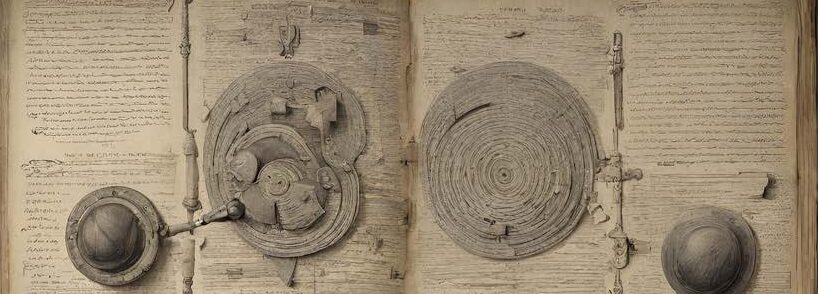
History and Development of Illuminated Manuscripts
Illuminated manuscripts serve an unusual yet extraordinary blend of art and literature. They are handcrafted books where the pages are decorated with ornate borders and miniature paintings. They were first produced by monasteries during the Middle Ages, approximately from the 5th to the 16th centuries (Mark, 2018). Muslim artisans did employ this method to decorate their works; however, they were generally used for Christian scriptures or practices in monastic scriptoria, where skilled monks transcribed and decorated religious texts in writing rooms. Preserved manuscripts have been discovered throughout Mesoamerica, Europe, the Middle East, and Asia, all having been written using comparable methods (Reading Public Museum, 2018). The term “illumination” denotes the inclusion of adornment and artwork in handwritten writings (Mark, 2018). Metals like gold and silver leaf were used to decorate the manuscripts, making them shine and glow when illuminated. Producing a text in this manner would have been very expensive, as it would have taken months or possibly years to finish (Reading Public Museum, 2018). The pages were made from animal skin, either sheep, calf, or goat, and were created in various sizes depending on their intended use (Illuminated Manuscripts, n.d.). In order to create smooth, bright, and sturdy writing sheets, the skins were cleansed, stretched, scraped, and whitened with chalk. Before copying a text, the scribe ruled lines to write on and indicated the page’s margins. Then he started writing in ink using a quill pen that was manufactured from a swan or goose feather. Usually, the text lines were between four and nine words long. A person commissioning a book could choose the lettering style, as most scribes were proficient in multiple writing styles (Medieval Illuminated Manuscripts, n.d.). Afterwards, the illuminator would begin illustrating the borders and images before finally folding, sewing, and binding the pages between leather or wood covers. Writing and illuminating manuscripts was an extremely demanding, complex, and lengthy task that demanded both mental and physical endurance (Park West Gallery, 2017). When more people became literate and desired both secular and religious texts, fewer illuminated manuscripts were produced and used. After some time, manuscript illumination became only a custom in secular organizations, courts, and private collections. The creation of illuminated manuscripts persisted up until Johannes Gutenberg, a German inventor, created the printing machine and moveable type in the 1450s, an invention that sadly could not replicate illuminated manuscripts (Medieval Illuminated Manuscripts, n.d.).
Functions and Uses of Illuminated Manuscripts

- Religious Purposes: The Bible, the Gospels, church service books, and prayer books intended for personal devotion made up the majority of the illuminated manuscripts that were transcribed for religious purposes (Medieval Illuminated Manuscripts, n.d.).
- Status symbols: Special books, such as altar Bibles used in cathedrals, as well as smaller and more personalized religious texts, were made as status symbols for the rich (Reading Public Museum, 2018).
- Educational tools: Since the majority of Christians were illiterate and had little access to written materials, the illustrations in the illuminated manuscripts provided vital assistance in comprehending the story of a book as well as the core religious teachings (McAloon, 2018).
manuscript_nerd, & Horvath, I. (2012). Lindisfarne Gospels-Mark. Flickr. photograph. Retrieved from https://flic.kr/p/cTWMiQ
The Significance of Illuminated Manuscripts for Writing and Reading Practices
I am confident in my belief that the significance of illuminated manuscripts mainly relies on their transmission of knowledge, culture, and especially religion to non-literate people. In a time when illiteracy was widespread, illuminated manuscripts served as assisting tools in helping readers effectively understand the text and were a new and successful solution to preserving and disseminating knowledge. The ornate illustrations and artistic decorations highlighted the text’s visual component and promoted a deeper understanding of the writing. Evidently, the increase in the number of literate people coinciding with the ability to mass produce books resulted in an increased demand for books and a decrease in the production of illuminated manuscripts.
References
Book of Hours for Roman Use (Collins Hours) (detail), c. 1445–50, by Master of the Collins Hours (French, active Amiens, active 1430s–1440s), 1945-65-4. https://philamuseum.org/collection/object/49735
Encyclopaedia Britannica, inc. (2022, April 26). Illuminated manuscript. Encyclopaedia Britannica. https://www.britannica.com/art/illuminated-manuscript
Illuminated Manuscripts. National Gallery of Art. (n.d.). https://www.nga.gov/conservation/paper/manuscript-project.html
manuscript_nerd, & Horvath, I. (2012). Lindisfarne Gospels-Mark. Flickr. photograph. Retrieved from https://flic.kr/p/cTWMiQ
Mark, J. J. (2018, March 6). Illuminated Manuscripts. World History Encyclopedia. https://www.worldhistory.org/Illuminated_Manuscripts/
McAloon, J. (2018, August 15). How medieval illuminated manuscripts marked the rebirth of artistic freedom. Artsy. https://www.artsy.net/article/artsy-editorial-illuminated-manuscripts-brought-medieval-art-dark-ages
Medieval Illuminated Manuscripts. Minneapolis Institute of Art. (n.d.). https://new.artsmia.org/programs/teachers-and-students/teaching-the-arts/five-ideas/medieval-illuminated-manuscripts
Reading Public Museum, Reading, Pennsylvania. (2018, August 15). [Essay] Painted Pages: Illuminated manuscripts from the 13th to 18th centuries. Polk Museum of Art at Florida Southern College. https://polkmuseumofart.org/media/2019/2/13/painted-pages-illuminated-manuscripts-from-the-13th-to-18th-centuries#:~:text=Illumination%20was%20reserved%20for%20special,wealthy%20as%20signs%20of%20status
World History Encyclopedia. (2022). A Short History of the Medieval Illuminated Manuscripts. YouTube. Retrieved November 20, 2023, from https://youtu.be/pewasA24hPs?si=l2nG3u5IbqTq1xRj
